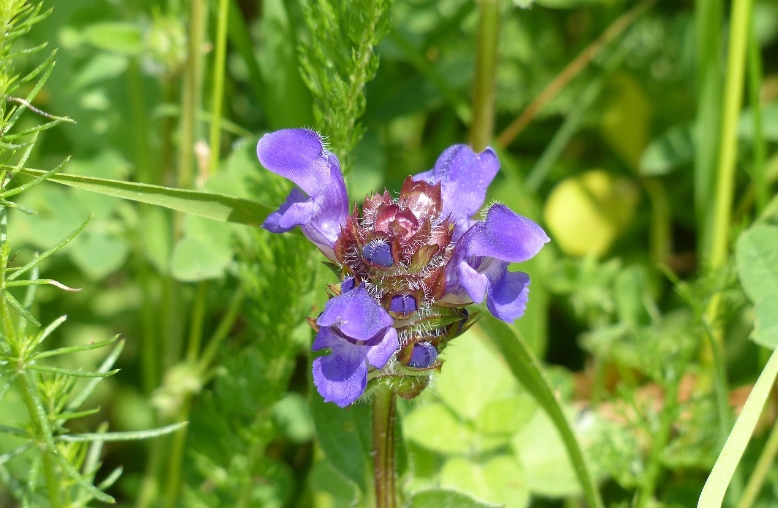Prunella vulgaris, commonly known as self-heal or heal-all, is a herbaceous plant that has been treasured in traditional medicine for centuries. This low-growing herb belongs to the mint family (Lamiaceae) and thrives in meadows, roadsides, and gardens. As its name suggests, Prunella vulgaris has long been associated with natural healing. But what exactly is this herb good for in the context of modern wellness? In this article, we will explore its therapeutic properties, practical applications, and emerging relevance in contemporary herbal formulations.

Medicinal Properties and Active Compounds
Prunella vulgaris is rich in biologically active compounds, including flavonoids, rosmarinic acid, ursolic acid, and tannins. These constituents give the herb its antioxidant, anti-inflammatory, antiviral, and antibacterial properties. Researchers have also noted its immunomodulatory effects, making it a valuable component in immune support supplements and natural antiviral remedies.
One of the most significant attributes of Prunella vulgaris is its ability to combat oxidative stress. The high antioxidant content helps neutralize free radicals, which are known to contribute to chronic diseases and aging. This makes it a popular ingredient in skin care products, especially those targeting inflammation and redness.
Traditional and Modern Uses of Prunella Vulgaris
Historically, healers used Prunella vulgaris for a range of ailments, from sore throats to wounds. Today, modern herbalists and natural supplement manufacturers utilize the herb in a wide array of products. Some of the most common uses include:
Supporting respiratory health: Prunella vulgaris teas or extracts can soothe sore throats, relieve coughs, and reduce inflammation in the respiratory tract.
Skin healing: Applied topically, self-healing ointments help accelerate wound healing and reduce skin irritations. It's often included in herbal salves and natural first aid kits.
Immune system booster: With its antiviral properties, the herb is increasingly included in immune boosting tinctures and cold and flu formulations.
Digestive support: When taken internally, it may aid digestion, reduce gastric inflammation, and help restore gut health, making it a valuable ingredient in digestive herbal blends.
Forms and Application Methods
Prunella vulgaris is available in various forms to suit different therapeutic needs:
Dried herb: Often brewed into tea for soothing internal inflammation or promoting hydration.
Liquid extract or tincture: A more potent and fast-acting form, typically used for immune or hormonal support.
Topical cream or salve: Ideal for treating cuts, bruises, and rashes.
Capsules: Used in dietary supplements, particularly those targeting immunity or hormonal balance.
Reputable herbal product suppliers and natural health manufacturers often offer certified organic Prunella vulgaris, ensuring the highest potency and purity.
The herb is also gaining traction in natural cosmetics and clean beauty industries. Its anti-inflammatory and antimicrobial characteristics make it a useful ingredient in eczema relief creams and acne treatment gels.
Frequently Asked Questions (FAQs)
Is Prunella vulgaris safe to consume daily?
Daily use should be guided by a qualified herbalist or healthcare provider.
What are the main health benefits of Prunella vulgaris?
Key benefits include immune system support, wound healing, anti-inflammatory effects, thyroid regulation, and potential antiviral action. It is also used in skin care products for eczema, acne, and minor burns.
Are there any side effects of Prunella vulgaris?
As with any herb, interactions with medications are possible, so it’s best to consult a healthcare provider before starting use, especially for those with chronic health conditions.
What is the best way to take Prunella vulgaris?
The most common forms are dried herb tea, liquid extract, and capsule supplements. The choice depends on your intended use: tea for general wellness, extract for concentrated benefits, and topical forms for skin support.
Can children use Prunella vulgaris products?
Mild formulations like teas or diluted salves may be suitable for children, but always seek pediatric or professional herbal advice before using on infants or young kids.
Can Prunella vulgaris be used alongside other herbs or supplements?
Yes, Prunella vulgaris pairs well with other adaptogenic herbs like ashwagandha, reishi, and holy basil in formulations for immune balance and stress support. It’s also frequently blended with elderberry, echinacea, or licorice root in cold and flu formulations. However, combining herbs should be done under professional supervision to avoid interactions.
What does Prunella vulgaris taste like?
The dried herb has a slightly bitter, earthy, and mildly minty flavor. When brewed into tea, it pairs well with honey, lemon balm, or peppermint to improve palatability.
Where can I buy high-quality Prunella vulgaris products?
You can find Prunella vulgaris products from reputable herbal product suppliers and natural supplement manufacturers. Look for items labeled “organic,” “wildcrafted,” or “third-party tested” for quality assurance.
Conclusion
Prunella vulgaris is far more than a humble roadside plant. Backed by both tradition and growing scientific validation, it offers a wealth of health benefits ranging from immune support to skin healing. Its versatility has made it a cornerstone of modern herbal formulations and a key component in a variety of natural health products. However, while it shows great promise, it's important to use it under the guidance of a qualified herbalist or healthcare provider, especially if combining it with other medications or addressing chronic conditions. When used responsibly, Prunella vulgaris can be a powerful ally in holistic wellness.
